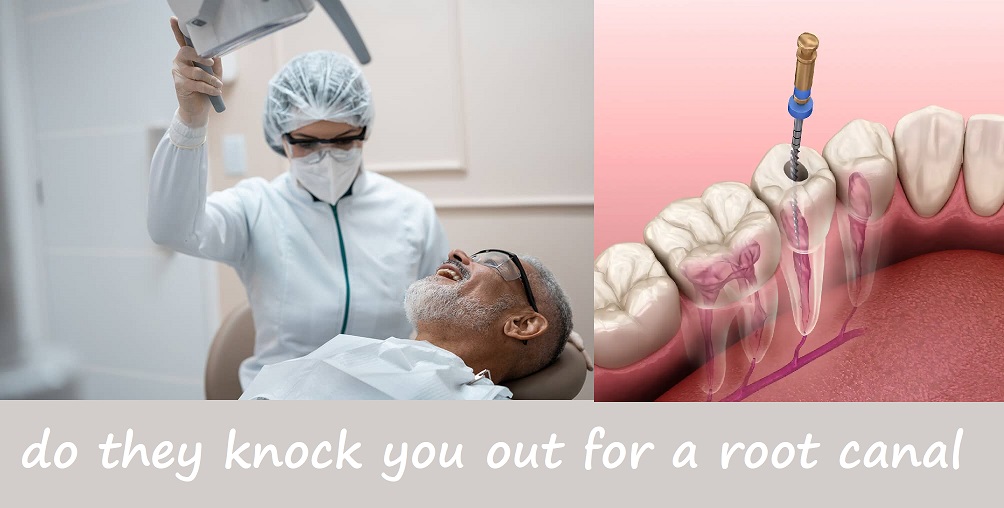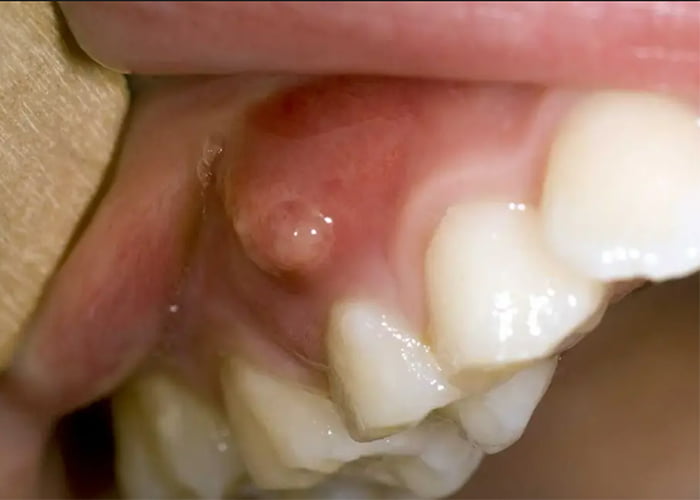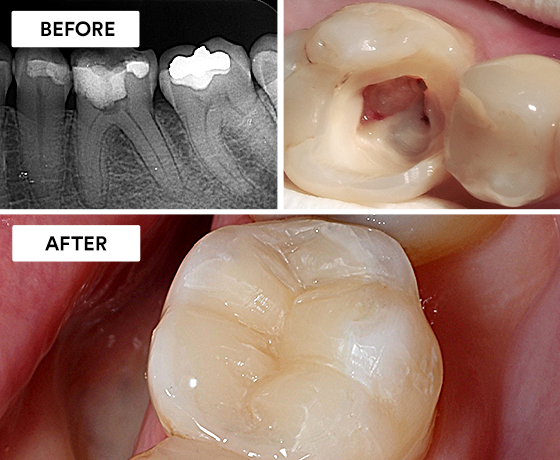Do they knock you out for a root canal

Dental procedures can often provoke anxiety and fear in many patients. Root canals, in particular, have garnered a reputation for being particularly daunting. One common question that arises is, “Do they knock you out for a root canal?” Understanding the nuances of anesthesia and sedation options available during a root canal can help alleviate some of these concerns and provide clarity on what to expect.
Understanding Root Canals
A root canal is a procedure designed to save a tooth that is badly decayed or infected. The procedure involves removing the damaged or infected pulp, cleaning and disinfecting the inside of the tooth, and then filling and sealing it. Without this treatment, the tissue surrounding the tooth can become infected, leading to abscesses and further complications.
The Root Canal Procedure
- Diagnosis and X-rays: The process begins with a thorough examination, including X-rays, to assess the extent of the damage and plan the procedure.
- Anesthesia: Local anesthesia is typically administered to numb the area around the affected tooth, ensuring the procedure is as pain-free as possible.
- Access Opening: An access hole is drilled into the tooth to reach the infected pulp.
- Pulp Removal: The pulp, along with any bacteria and debris, is removed from the tooth’s root canals.
- Cleaning and Shaping: The empty canals are cleaned and shaped to prepare for filling.
- Filling and Sealing: The cleaned canals are filled with a biocompatible material and sealed to prevent future infections.
- Restoration: Finally, the tooth is restored with a crown or filling to protect it and restore its function.
Types of Anesthesia and Sedation
The question of whether patients are knocked out for a root canal hinges on the types of anesthesia and sedation available. Understanding these options can help clarify what level of sedation might be appropriate for different patients and circumstances.
Local Anesthesia
- What It Is: Local anesthesia involves injecting anesthetic near the tooth to numb the specific area being treated. The most common local anesthetic used is lidocaine.
- Effect: Patients remain fully awake and conscious but should not feel any pain in the numbed area.
- Advantages: Local anesthesia is effective and carries fewer risks compared to general anesthesia. Recovery time is immediate, as the patient remains conscious throughout the procedure.
Sedation Dentistry
For patients with severe anxiety or for more complex procedures, sedation dentistry might be recommended. Sedation can range from mild relaxation to full unconsciousness.
- Nitrous Oxide (Laughing Gas):
- What It Is: A mild sedative inhaled through a mask placed over the nose.
- Effect: Induces a feeling of relaxation and calmness while keeping the patient awake and responsive.
- Advantages: Quickly wears off after the procedure, allowing patients to drive themselves home.
- Oral Sedation:
- What It Is: Sedative medication taken orally, usually in pill form.
- Effect: Varies from mild to moderate sedation, making the patient drowsy but still conscious.
- Advantages: Helps alleviate anxiety, but the patient remains awake. A companion might be needed to drive the patient home.
- IV Sedation:
- What It Is: Sedative drugs administered intravenously.
- Effect: Produces a deeper level of sedation, but patients can still respond to verbal cues.
- Advantages: Provides a higher level of control over the sedation level and is often used for more anxious patients or longer procedures.
General Anesthesia
- What It Is: Involves using medication to render the patient completely unconscious.
- Effect: The patient is entirely asleep and unaware of the procedure.
- Advantages: Eliminates any sensation or awareness during the procedure.
- Considerations: General anesthesia carries higher risks and requires careful monitoring. It is typically reserved for very complex cases or patients with extreme dental anxiety.
Factors Influencing Anesthesia Choice
Several factors influence whether a patient might be knocked out for a root canal or whether less intensive sedation methods might be more appropriate.
Patient Anxiety and Comfort
- High Anxiety: Patients with severe dental anxiety or phobia might benefit from deeper sedation or general anesthesia to help them remain calm and relaxed.
- Mild Anxiety: For those with mild anxiety, local anesthesia combined with mild sedation (such as nitrous oxide) might be sufficient.
Complexity of the Procedure
- Complex Root Canals: In cases where the root canal involves multiple roots or severe infection, deeper sedation might be considered to ensure patient comfort over a longer duration.
- Routine Root Canals: For more straightforward procedures, local anesthesia is typically adequate.
Patient Health and Medical History
- Health Conditions: Certain medical conditions might contraindicate the use of general anesthesia or specific sedatives. A thorough medical history review is essential.
- Allergies and Reactions: Any history of allergic reactions to anesthetics or sedatives must be considered.
Dentist’s Recommendation
- Experience and Training: The dentist’s experience and comfort level with different sedation methods can influence the choice. Some dentists might prefer certain sedation techniques based on their training and expertise.
- Patient Consultation: Open communication between the patient and dentist is crucial. Discussing fears, preferences, and previous experiences helps in making an informed decision.
The Pros and Cons of Different Sedation Levels
Understanding the advantages and potential drawbacks of various sedation levels can help patients make informed choices about their root canal procedure.
Local Anesthesia
- Pros:
- Minimally invasive with immediate recovery.
- Effective pain control during the procedure.
- Lower risk compared to general anesthesia.
- Cons:
- Requires the patient to be awake and aware, which might increase anxiety for some.
Mild to Moderate Sedation (Nitrous Oxide and Oral Sedation)
- Pros:
- Helps reduce anxiety while keeping the patient conscious.
- Quick recovery, especially with nitrous oxide.
- Flexible dosage to adjust sedation level.
- Cons:
- Might not be sufficient for patients with severe anxiety.
- Oral sedation requires someone to drive the patient home.
Deep Sedation (IV Sedation)
- Pros:
- Provides significant anxiety relief.
- The patient remains responsive but in a deeply relaxed state.
- Suitable for longer or more complex procedures.
- Cons:
- Requires careful monitoring and trained personnel.
- Longer recovery time compared to mild sedation.
General Anesthesia
- Pros:
- Complete unconsciousness eliminates any fear or discomfort.
- Ideal for patients with extreme anxiety or special needs.
- Allows for more extensive dental work in one session.
- Cons:
- Higher risk and requires specialized equipment and personnel.
- Longer recovery period and more intensive post-procedure care.
- Generally more expensive due to the need for an anesthesiologist.
Post-Procedure Considerations
Regardless of the level of sedation or anesthesia used, there are several post-procedure considerations that patients should be aware of.
Immediate Aftercare
- Monitoring: Patients who have undergone deeper sedation or general anesthesia will need monitoring until the effects wear off.
- Transportation: Those who received oral or IV sedation or general anesthesia will need someone to drive them home.
- Diet and Activity: Patients may be advised to avoid certain foods and activities for a short period after the procedure.
Pain Management
- Medications: Over-the-counter pain relievers are often sufficient, but stronger medications might be prescribed for more complex cases.
- Cold Compresses: Applying cold compresses can help reduce swelling and discomfort.
Follow-Up Care
- Dental Visits: Follow-up appointments are essential to ensure proper healing and to address any complications.
- Oral Hygiene: Maintaining good oral hygiene is crucial to prevent future infections and ensure the longevity of the treatment.
Conclusion
When asking, “Do they knock you out for a root canal?” the answer depends on various factors, including patient anxiety levels, the complexity of the procedure, and medical history. While local anesthesia is standard and sufficient for most root canals, options for sedation, ranging from mild nitrous oxide to deep sedation and even general anesthesia, are available to ensure patient comfort.
Understanding these options and discussing them with a dental professional can help alleviate anxiety and make the experience as comfortable as possible. Ultimately, the goal is to ensure that patients receive the necessary treatment in a manner that best suits their needs and preferences, thereby improving their overall dental health and quality of life.
Related to read:
Best Oral Hygiene Practices For Optimum Oral Health.
How to Whiten Teeth Naturally?
How to keep your gums healthy and disease-free?
References
To ensure the information provided is accurate and up-to-date, the following sources were referenced:
- American Dental Association. (n.d.). Plaque and Tartar. Retrieved from ADA website
- Mayo Clinic. (n.d.). Dental Plaque. Retrieved from Mayo Clinic website
- National Institute of Dental and Craniofacial Research. (n.d.). Periodontal (Gum) Disease. Retrieved from NIDCR website









